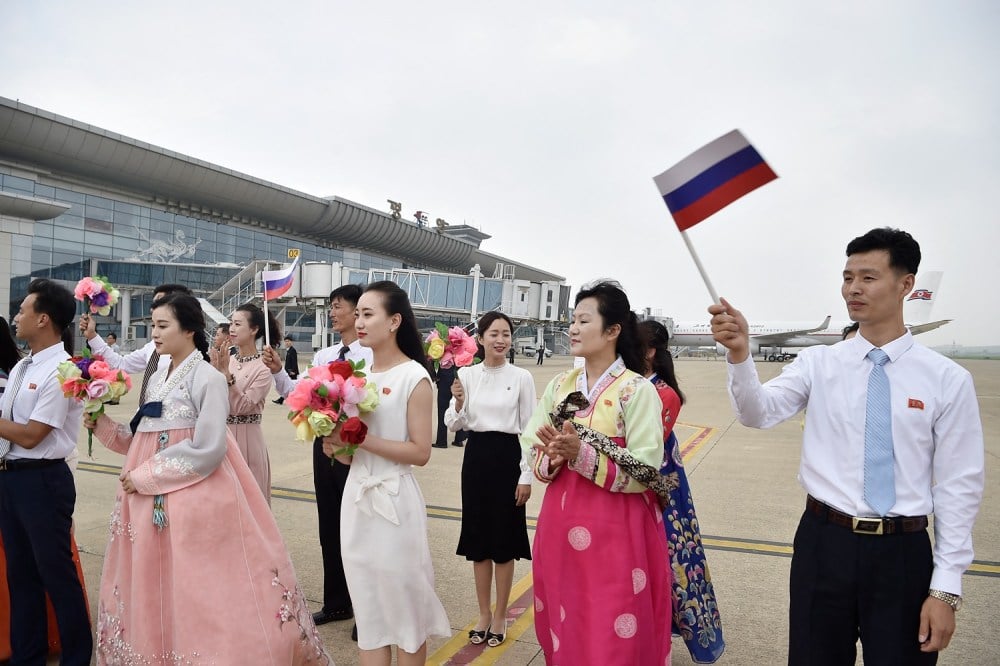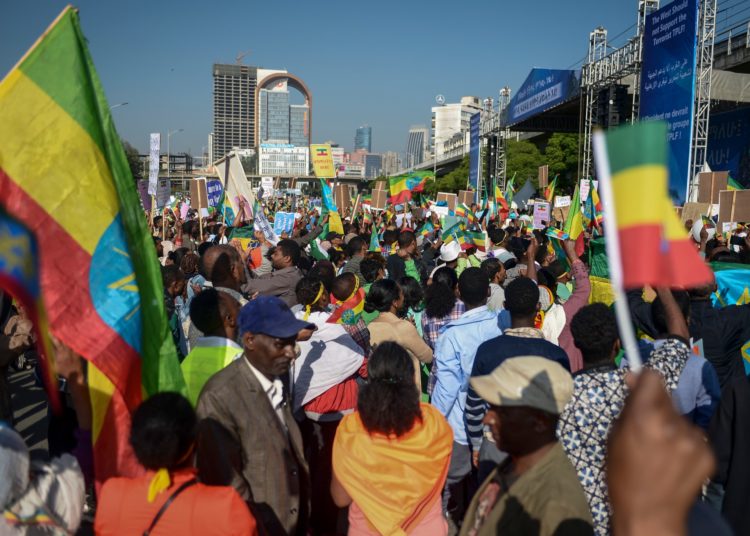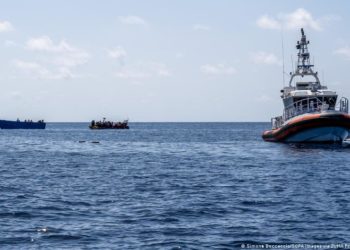For decades, U.S. policy toward North Korea has hinged on the hope that engagement and negotiation—particularly the promise of sanctions relief and security assurances—might temper Pyongyang’s nuclear ambitions. Some now speculate that a second Trump presidency could revive this diplomatic dynamic. Yet such expectations miss a profound shift in North Korea’s strategic calculus.
No longer seeking mere transactional benefits from Washington, Pyongyang is asserting itself as a nuclear and military power and actively aligning with Russia and China. Its goal: to help forge a multipolar world order capable of diluting U.S. hegemony. Recognizing this new alignment is essential if the United States hopes to chart a realistic path forward on the Korean Peninsula.
Throughout the Cold War and its aftermath, North Korea relied on balancing diplomacy to secure regime survival amid great-power rivalry. During the 1960s and 1970s, Pyongyang skillfully exploited the Sino-Soviet split—extracting aid from both Beijing and Moscow while asserting its autonomy through the Juche ideology. This strategy of calibrated ambiguity enabled North Korea to avoid external domination and extract critical support from competing patrons.
The 1990s ushered in a new set of challenges. The collapse of the Soviet Union, along with the lingering effects of political upheaval in China following the 1989 Tiananmen Square incident, compelled North Korea to broaden its engagement with the United States and pursue normalization with Japan and South Korea. The 1994 Agreed Framework epitomized Pyongyang’s effort to leverage diplomacy as a buffer against isolation and economic collapse.
In the early 2000s, the six-party talks—bringing together North Korea, South Korea, the United States, China, Japan, and Russia—embodied Pyongyang’s ongoing strategy of balancing among competing powers while advancing its own strategic interests. By drawing all regional stakeholders into multilateral negotiations, North Korea skillfully exploited their divergent priorities to buy time, secure concessions, and preserve its diplomatic relevance.
Even during the first Trump presidency, Kim Jong Un revived a strategy of equidistant diplomacy. Between 2018 and 2019, he met with Donald Trump three times—in Singapore, Hanoi, and Panmunjom—and held five summits with Chinese President Xi Jinping in the same span of time as the Trump-Kim summits. This diplomatic flurry underscored Pyongyang’s effort to maneuver between Washington and Beijing in pursuit of maximum leverage and benefit.
Since Russia’s invasion of Ukraine, though, Pyongyang has moved decisively from hedging to alignment. In March 2022, just after Russia’s invasion, North Korea voted against a U.N. General Assembly resolution demanding Russia end its aggression against Ukraine—standing alongside only Belarus, Eritrea, and Syria. This move represented a clear and unequivocal signal of political support for Moscow. In the years since, North Korea has substantially deepened its military cooperation with Russia. The signing of a comprehensive military agreement by Russian President Vladimir Putin and Kim in June 2024 marked a historic elevation of their partnership, encompassing mutual defense commitments, weapons transfers, and broader strategic coordination.
Following this agreement, North Korea has supplied Russia with substantial quantities of ammunition, artillery shells, and short-range ballistic missiles, which have been employed in the war in Ukraine. In addition, Pyongyang has dispatched more than 11,000 troops to Russia to support Moscow’s military operations against Ukraine. This marks a remarkable transformation in North Korea’s role, from relying on external support to becoming an active supplier of military resources to a great power.
North Korea has also benefited from significant Russian support across multiple sectors. Economically, Russian assistance—in the form of goods, energy supplies, and technology transfers—has been crucial in helping Pyongyang recover from the hardships of the pandemic era. This support now underpins North Korea’s ongoing efforts to revitalize its regional economies, particularly through its 20×10 rural development plans.
However, Russia’s support extends well beyond material and economic assistance. Militarily, while North Korea has traditionally prioritized the development of nuclear weapons, it is now expanding into the production of advanced strategic weaponry—including warships, radar systems, and missile defense systems—with critical backing from Moscow. In addition, the newly signed military treaty between North Korea and Russia includes a mutual defense clause, obligating each nation to assist the other in the event of external aggression. This provision marks a significant transformation in North Korea’s security environment, providing Pyongyang with an unprecedented layer of external security assurance.
This comprehensive assistance from Russia has empowered North Korea to pursue its stated principle of Juche—self-reliant economic growth, social development, and national defense—with greater assertiveness than ever before.
North Korea’s deepening development partnership with Russia underscores a fundamental shift in its geopolitical orientation. Confronted with the persistence of great-power rivalry, Pyongyang has firmly resolved to align its strategic trajectory with both Moscow and Beijing.
North Korea believes that Russia is unlikely to end the war in Ukraine or accept an “unconditional cease-fire” demanded by Kyiv and its allies in the United States and Europe. Pyongyang views Moscow’s ultimate objective—to compel Washington and NATO to abandon their hostile policies—as closely aligned with its own strategic interests. As a result, North Korea expects any Western-backed peace negotiations to falter unless they address Russia’s core demands.
Kim underscored this perspective during his meeting with Russia’s Security Council secretary, Sergei Shoigu, pledging “unconditional support” for Moscow’s stance on Ukraine and other major international issues. North Korea has also denounced U.S. unilateral military hegemony as a threat to global peace, further reinforcing its alignment with Russia. Even after the war in Ukraine concludes, cooperation between Moscow and Pyongyang is likely to persist, as both remain committed to the long-term strategic objective of reshaping a U.S.-led international order that they perceive as detrimental to their security.
This outlook also reflects North Korea’s interpretation of U.S.-China relations—not as a short-term trade conflict but as a struggle for hegemony between two great powers. From Pyongyang’s perspective, China is determined to resist as long as Washington threatens its national development and strategic rise.
North Korea now views great-power competition as a lasting feature of the international system and considers its long-term security fundamentally tied to the strategic aims of Russia and China: challenging U.S. dominance and reshaping the global order. No longer compelled to balance between Moscow and Beijing, Pyongyang has moved beyond mere survival and is seeking a more assertive role in a multipolar world. Convinced that prolonged U.S.-China-Russia rivalry will persist, North Korea is likely to maintain bloc-based alignment as the cornerstone of its external strategy.
Having secured political backing, economic lifelines, and military support through deepening ties with Russia and China, Pyongyang now regards traditional U.S. offers—such as sanctions relief, economic cooperation, or even a formal peace treaty—as largely irrelevant to its core interests.
For any renewed diplomatic effort to succeed, Washington must first recognize North Korea’s long-term strategy in the multipolar order; grapple with the growing linkages between Northeast Asian security dynamics and the war in Ukraine; anticipate the future trajectory of U.S. relations with China and Russia; and contend with the deepening military cooperation between Pyongyang and Moscow. As a result, any new approach should focus on a broad regional security framework—one that engages all relevant actors to reduce tensions, enhance transparency, and build trust amid a rapidly shifting geopolitical environment.
Trump’s characterization of North Korean troop deployments to Russia as a “very complicating factor” highlights how Pyongyang’s alignment with Moscow now obstructs progress in diplomacy. In this context, U.S.-North Korea dialogue is unlikely to resume without a withdrawal of these forces. As Washington contemplates partial troop reductions in South Korea—despite rising concerns in Seoul—linking such adjustments to North Korea’s phased withdrawal from Russia, together with a Russian commitment to forgo military intervention on the peninsula, could promote mutual disengagement and ease regional anxieties.
This strategy, however, must also account for Beijing’s likely response, particularly if withdrawn U.S. forces are repositioned elsewhere in the Indo-Pacific. Transparency with China and its inclusion in related regional dialogue would be essential to prevent escalation and secure broader support. Together, these steps could create the foundation for a reciprocal security framework and open the door to renewed U.S.-North Korea diplomacy, particularly when the momentum for peace negotiations in Ukraine builds.
A second step could focus on nuclear nonproliferation and de-escalation on the Korean Peninsula. Rising nuclear threats from Pyongyang and growing calls in South Korea for its own nuclear deterrent have heightened international concern. North Korea, in turn, likely views the emergence of a nuclear-armed South Korea as a significant threat—especially given Seoul’s advanced technological capabilities.
To prevent further escalation, a trilateral arrangement could be established: Seoul would officially announce not to pursue nuclear weapons, Washington would refrain from deploying nuclear strategic assets in South Korea, and Pyongyang would freeze all missile testing, including intercontinental ballistic missiles and short-range systems targeting the region. This framework would likely gain support from both China and Russia, as it serves their shared interest in preventing nuclear proliferation and promoting regional stability.
This new approach emphasizes reciprocal, verifiable steps to reduce tensions and build trust among regional actors. Importantly, it aligns with Trump’s “America First” strategy by reducing the U.S. military burden, reinforcing alliances, preventing nuclear proliferation, and enhancing leverage in U.S.-China competition.
The post Why North Korea’s Done Hedging appeared first on Foreign Policy.




